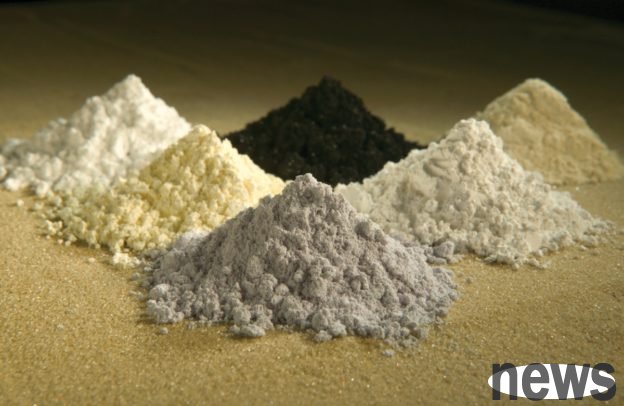Western countries have been committed to developing domestic rare earth industries in recent years to get rid of their dependence on China. However, Beijing’s recent announcement to expand controls on rare earth exports still has a global impact. Th...

Western countries have been committed to developing domestic rare earth industries in recent years to get rid of their dependence on China. However, Beijing’s recent announcement to expand controls on rare earth exports still has a global impact. The following is an overview of the development of the rare earth industries in Australia, the United States, Canada, and Europe.
AustraliaAustralia has the fourth largest rare earth reserves in the world and plans to increase production. Last year, its rare earth production was 13,000 metric tons.
The Australian government promotes the "Critical Minerals Strategy 2023-2030" to promote the growth of the domestic critical minerals industry and expand downstream processing capacity.
The country’s well-known rare earth projects include Arafura Rare Earths’ Nolans Project, which will set up mines, processing plants and other related infrastructure in the Northern Territory. It is expected to become one of the first processing facilities in Australia to refine rare earth ores into rare earth oxides.
Iluka Resources’ new rare earth refinery in the West Coast town of Eneabba is expected to be put into operation in 2027. This project has received a loan of AUD 1.65 billion from the Australian government.
The Australian Congress also passed a bill this year, allowing production projects that process and refine 31 key minerals to enjoy a 10% tax discount on related costs for a maximum period of 10 years.
AmericaThe rare earth production in the United States last year was estimated at 45,000 metric tons, worth US$260 million. The main mine is the Mountain Pass mine in California of the American mining company MP Materials.
The U.S. government actively supports MP Materials in increasing its processing capacity and rare earth magnet production through investments, loans, tax incentives, and long-term procurement commitments. The Department of Defense has even become the largest shareholder of MP Materials.
In October this year, Australia's Lynas Rare Earths and the US company Noveon Magnetics announced a partnership to supply rare earth permanent magnets to the US defense and commercial sectors.
CanadaCanada has one of the largest known reserves and resources of rare earth metals in the world. Its rare earth oxide reserves are estimated to reach more than 15.2 million metric tons in 2023.
In the "Critical Minerals Strategy" launched by the Canadian government in recent years, six minerals are listed as priority minerals for development because they have unique potential to promote Canada's economic growth and are necessary raw materials for important supply chains, including rare earth elements.
In August this year, Canada and Germany signed a joint statement of intent to deepen cooperation in ensuring the supply chain of key minerals, research and development, and investment, covering industries including electric vehicle manufacturing, national defense, and aerospace.
EuropeThe European Raw Materials Alliance was established in 2020 under the auspices of the EU Executive Commission to identify and resolve regulatory obstacles and opportunities and assist Europe and the world in developing alternative rare earth supply chains.
The report of the European Raw Materials Alliance points out that although Europe has rich rare earth reserves, it lacks large-scale mining activities.
According to the European Raw Materials Alliance, there are at least 14 rare earth-related projects across Europe, with an investment of 1.7 billion euros. They will form the basis of the European rare earth industry and are expected to meet 20% of the EU's needs by 2030.
Europe’s well-known rare earth project is the Pensana rare earth refinery located in the Saltend region of East Yorkshire, England. Its goal is to meet 5% of the global demand for neodymium and praseodymium oxide.
In addition, France and Estonia also have rare earth processing facilities.
What kind of pollution will the development of rare earths cause? How to reduce environmental impact?Rare earth is a highly polluting industry. From mining to smelting, it will cause damage to the environment such as vegetation destruction, soil erosion, and ecosystem imbalance. During the smelting process, it will also cause water and air pollution.
Therefore, although Europe, the United States, Japan and other advanced regions and countries have abundant rare earth resources, they have mostly suspended mining and chosen to import rare earth raw materials from China at relatively low prices.
In order to reduce the impact of the rare earth industry on the environment, improving mining and processing technology, strengthening pollution prevention and environmental supervision, and developing new technologies to more efficiently recover rare earth elements from electronic waste for reuse are regarded as several possible directions.
Further reading: Rare earth battle: Trump launches tariff war against China again, but hints at improvement China upgrades rare earth export controls, Ministry of Economic Affairs: Taiwan's semiconductor manufacturing process has not been affected U.S.-China trade war resumes, Beijing criticizes U.S. for hypocrisy and defends rare earth export restrictions China plans to tighten controls on rare earths. Experts: Taiwanese factories’ imports from Japan will have a huge impact To counter China’s rare earth export measures, Trump will impose 100% tariffs on China starting from 11/1